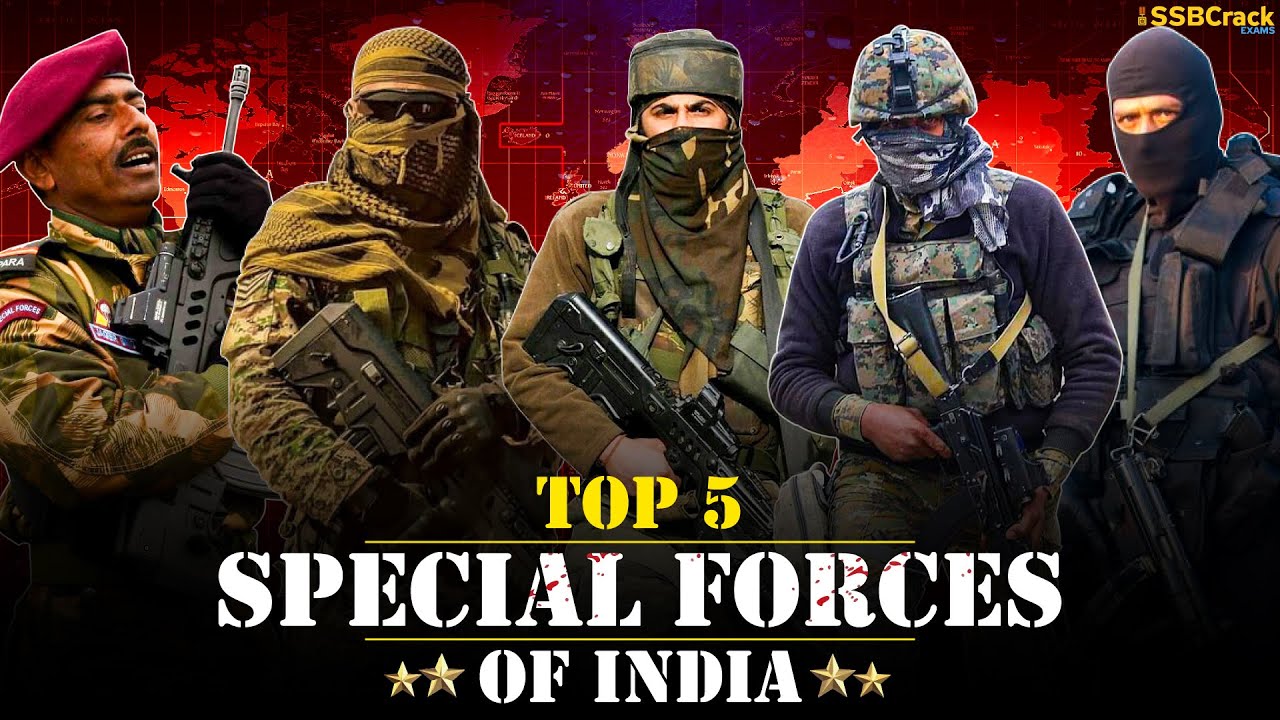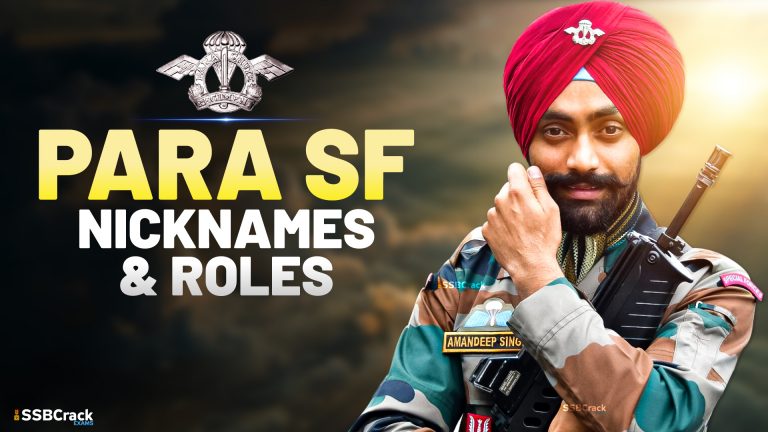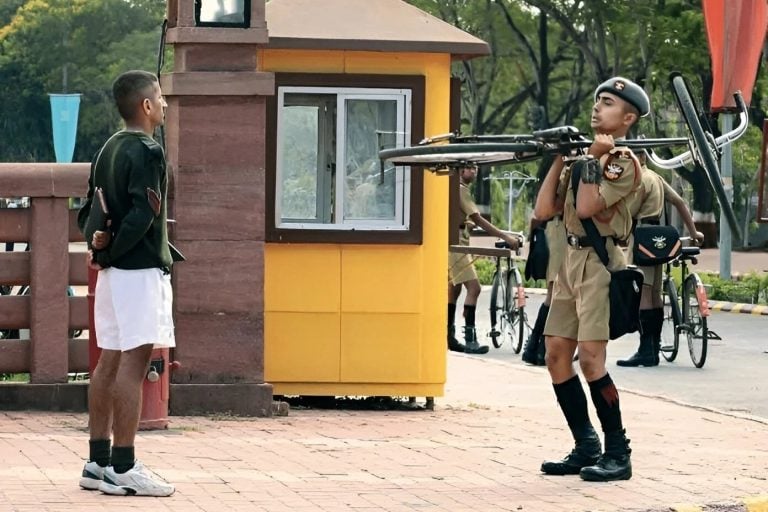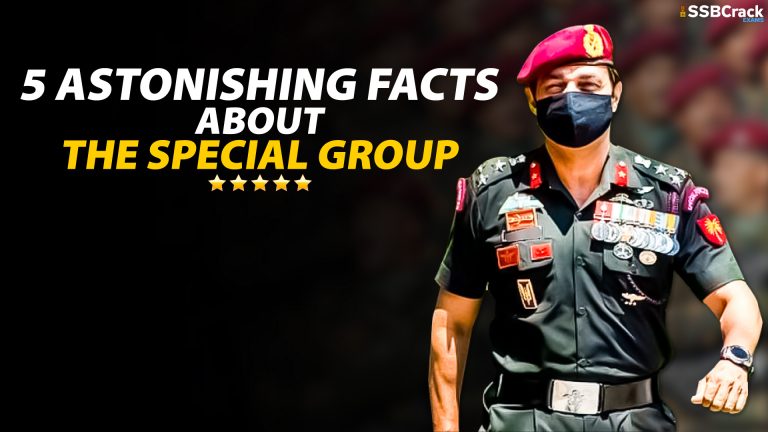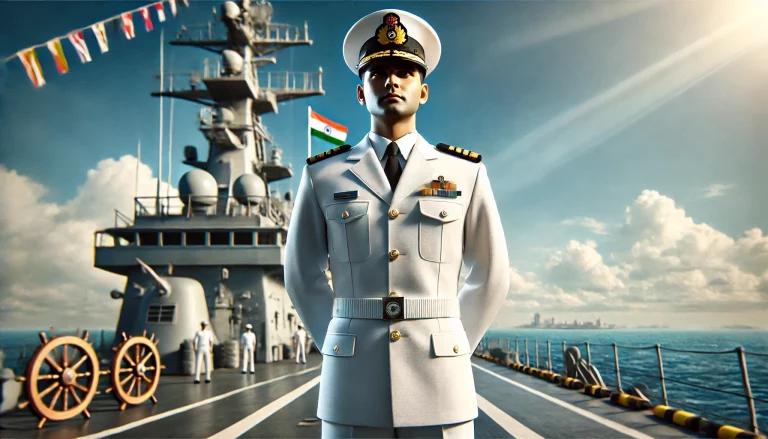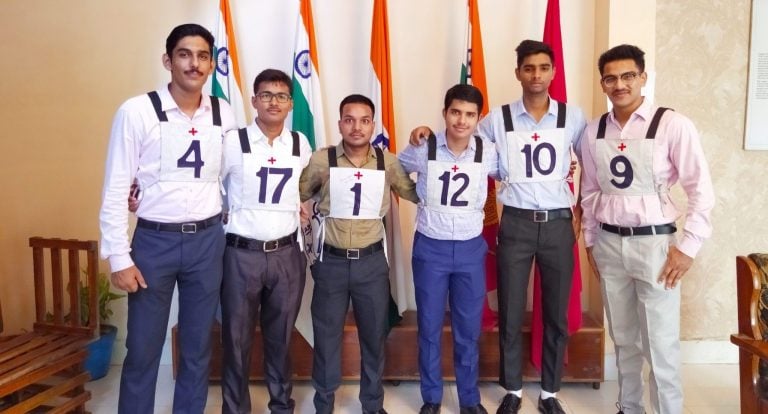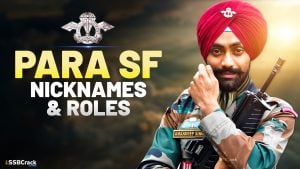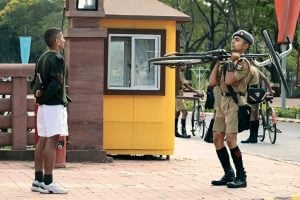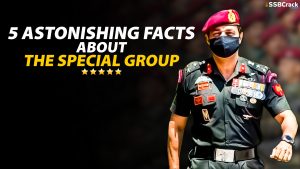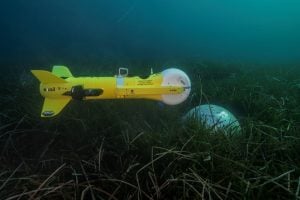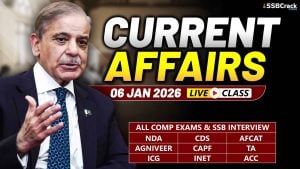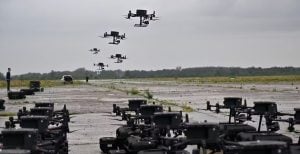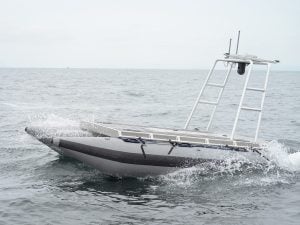India has a number of special forces units. The Para SF of the Indian Army, the MARCOS of the Indian Navy, and the Garud Commando Force of the Indian Air Force are all independent special forces formations of the Indian Armed Forces. Other special forces, such as the National Security Guard of the Home Ministry, are not governed by the military and work under civilian organizations. The Armed Forces Special Operations Division, which has a unified command and control organization, deploys small groups of military SF forces. The Special Group and the Special Frontier Force are two independent special forces under the supervision of India’s foreign intelligence agency, the Research and Analysis Wing. In this article we present to you the TOP 5 special forces of India.
Download Our App to enroll yourself for SSB Interview online coaching.
Book Your Slot for SSB Interview Online Class
PARA-SF
The Indian Army’s special forces are known as the Parachute Regiment (Special Forces), or Para (SF). Following the 1965 Indo-Pakistani conflict, this unit was formed in June 1966. The first nucleus of the permanent para commando battalion to be founded under the Parachute Regiment was formed by an impromptu commando force called Meghdoot Force, which took part in the 1965 conflict. The force had expanded to two battalions by 1969, the 9 Para and the 10 Para. The unit’s first combat operations took place during the 1971 Indo-Pakistani conflict, when they carried out attacks on Pakistani military targets.
During Operation Cactus in the Maldives in 1988, the 3 Para (SF) and 6 Para took part in the Indian Army’s first documented international involvement. Operation Cactus was intended to prevent a coup against President Maumoon Abdul Gayoom’s regime. The Para (SF) were stationed in Sri Lanka in the late 1980s, conducting helicopter-borne assaults and security missions.
Since the 1990s, the Para (SF) have been fighting rebels in Kashmir as part of counter-terrorism operations. Raids and ambushes are examples of these activities. During the Kargil conflict in 1999, the Para (SF) conducted operations against Pakistan’s military, including raids against Pakistani infantry and special forces. The 2 Para (SF) took part in Operation Khukri in Sierra Leone in 2002 to rescue 223 Indian Army 5/8 Gorkha Rifles troops who were posted as UN peacekeepers but were encircled by terrorists from Sierra Leone’s Revolutionary United Front.
The 9 Battalions of PARA-SF are:
- 1 PARA (SF) – for urban warfare and CI/CT
- 2 PARA (SF) – for mountain warfare and CI/CT
- 3 PARA (SF) – for desert warfare and CI/CT
- 4 PARA (SF) – for mountain warfare and CI/CT
- 9 PARA (SF) – for mountain warfare, urban warfare and CI/CT
- 10 PARA (SF) – for desert warfare and CI/CT
- 11 PARA (SF) – for jungle warfare and CI/CT
- 12 PARA (SF) – for jungle & mountain warfare and CI/CT
- 21 PARA (SF) – for jungle & mountain warfare and CI/CT
MARCOS
The Marine Commando Force, better known as MARCOS, was established in February 1987 after being envisioned in 1985. It is the Indian Navy’s special forces unit. The original core of MARCOS was founded by a few officers from the Indian navy who were trained by the US Navy SEALs and British special forces. MARCOS was deployed in Sri Lanka against the Liberation Tigers of Tamil Eelam (LTTE) in July 1987, just months after its inception. MARCOS participated in a number of missions in the 1990s, including Operation Tasha (1991) against the LTTE, Operation Zabardust (1992) against a ship carrying armaments, and support for the United Nations in Somalia (1993). They also took part in the Kargil War in 1999. MARCOS have been on the ground in Jammu & Kashmir since 1995, conducting counter-terrorism operations against insurgents. MARCOS worked with the National Security Guards in the aftermath of the 2008 Mumbai attacks, however their efficacy was hampered due to lack of swift decision making by the bureaucrats.
MARCOS are assigned to train with the Indian Army’s para commandos for three weeks after completing a ten-week basic training program. MARCOS then goes on to advanced training, where he learns skills like skydiving, weapons training, counter-insurgency, languages, and combat in various terrains, among other things. Each MARCOS unit, known as Prahar, is made up of eight troops.
MARCOS’ tasks include the following:
- Assisting in amphibious operations.
- Surveillance and reconnaissance missions of a special nature.
- Diving operations and raids and other clandestine activities within enemy territory.
- Operations against terrorism.
GARUD
The Garud commandos are the Indian Air Force’s special forces (IAF). Counter-terrorism, hostage rescue, providing protection to the IAF’s vulnerable assets, and different air force-specific special operations are among their responsibilities. This unit was first envisioned in 2002 and was formally constituted on February 6, 2004. Garuds are all volunteers who go through a 52-week basic training program that includes a three-month probation, special operations training, basic airborne training, and other combat and survival abilities. Garuds are sent in the final stages of basic training to get combat experience. Following that comes advanced training, which includes specialized weapons training.
Direct action, special reconnaissance, rescuing downed pilots in hostile territory, building air bases in hostile areas, and providing air traffic management to these air bases are among the Garuds’ designated missions. The Garuds also disrupt enemy air defenses and destroy enemy assets such as radars, as well as evaluate the results of Indian airstrikes and employ laser designators to lead Indian attacks. Even though some important assets are safeguarded by Garuds, the Air Force Police and the Defence Protection Corps are normally in charge of the security of IAF sites and equipment.
SPECIAL GROUP
The Special Group (SG) is a special forces unit of India’s foreign intelligence agency, the Research and Analysis Wing. 4 Vikas, 22 SF, and 22 SG are some of the other names for it. The force is thought to be made up of India’s most elite troops, and its tasks include performing operations with which the Indian government does not want to be identified explicitly.
The SG was founded in 1981 and raised the following year under Project Sunray. The unit is incredibly clandestine, and the public was previously unaware of its existence. SG is said to have carried out black activities outside of India. There are four SG squadrons in all, with each squadron including four personnel. Each unit has its own set of skills. Personnel for SG comes from all branches of the Indian military.
The SG is mostly located in Uttarakhand’s Chakrata and Uttar Pradesh’s Sarsawa, where it is headquartered. Volunteers from all branches of the Indian Armed Forces, including the Indian Army’s special forces, make up the organization’s troops. Personnel from the SG return to their former units after serving on deputation in the SG. Personnel from SG are divided into three to four companies. An SG team is on high alert for eventualities 24 hours a day, 7 days a week. There are four SG squadrons in all, with each squadron including four personnel. Each unit has its own set of skills. Intelligence collecting, operations planning, communications, and training are all areas where the SG has specific branches.
SPECIAL FRONTIER FORCE
The Special Frontier Force (SFF) was established on November 14, 1962, as an Indian special operations outfit. It mostly consisted of Tibetan refugees in India. Its scale and scope of activities have now expanded. Its intended mission was to perform clandestine operations behind Chinese lines in the event of another Sino-Indian conflict. SFF has fought in India’s major overseas battles throughout its history, including the Bangladesh Liberation War and the Kargil War. It has also been active in internal security, notably Operation Blue Star and serving as Prime Minister Indira Gandhi’s “Personal Force” to repress opposition parties during the 1975–77 state of emergency. It has taken part in border operations against China, notably the conflicts between China and India in 2020.
The force is based in Chakrata, Uttarakhand, and is under the direct supervision of India’s external intelligence agency, the Intelligence Bureau (IB), and later the Research and Analysis Wing (RAW). It is not part of the Indian Army, but operates under their operational control with its own rank structure, charter, and training infrastructure. It is overseen by the Cabinet Secretariat’s Directorate General on Security, which is led by an Inspector General (SFF) who is picked from the Indian Army’s Major General level and reports directly to the Prime Minister’s Office.
Conclusion
These Special Forces are deployed on every imaginable terrain and on every possible combat conditions. They are trained in the most modern weaponry and given the best equipment to use. But, beyond all that their training instills in them a thirst for accomplishing one’s objectives, even if it means going an extra mile. We hope defence aspirants too learn to cultivate such an attitude and be meticulous in their preps.
The readers can subscribe to SSBCrackExams to get more informative articles in their feed. All the best.
You can prepare for defence entrance exams such as NDA, AFCAT, INET, and CDS by taking Written Online courses as they will not only give you access to full-length quality lectures but will also provide the facility to take standardized mock tests for better study and strategic growth in the exam. You can take multiple quizzes after each lesson to ensure the full understanding of the subject along with creating your customized lesson plans. You can check out the course content along with other important specifics at SSBCrackExams.
To crack the SSB Interview, You can join our SSB interview live classes batch and we recommend you to Enroll SSB INTERVIEW ONLINE COURSE. Trusted by thousands of defence aspirants.
Book Your SSB Interview Class Now – Click Here
Enroll In Our SSB Interview Course
Also Read:
